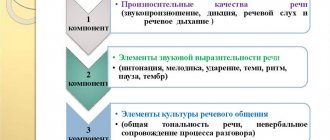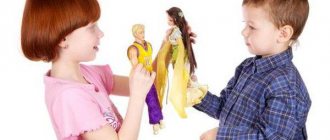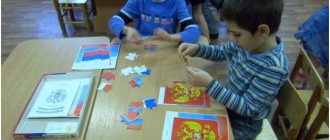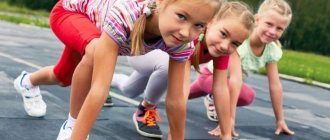Self-analysis of educational activities on environmental education in the senior group on the topic:
Self-analysis of GCD
in the older group on cognitive development
on the topic: “Our home is nature!”
senior teacher
Danilova L.V.
Purpose of GCD
: Let children understand that nature is our common home,
Tasks
:
Cognitive development: continue to form an understanding of the role of nature in human life, expand and systematize children’s knowledge about nature, develop interest in the problem of nature conservation, introduce children to the norms and rules of behavior in nature.
Speech development: develop in children the desire to make a feasible contribution to the environmental education of the population, develop their horizons, thinking, and connected speech.
Social and communicative: Develop the ability to evaluate one’s own actions and the actions of peers. Foster a caring attitude towards nature.
Physical: formation of correct posture of children in class.
Artistic and aesthetic: teach children to read with the expression of a poem, cultivate a joyful, caring attitude towards awakening nature.
Vocabulary work: introduce into the children's active vocabulary: globe, planet, map, nature. Get used to answering with a complete answer.
Preliminary work: looking at a globe, memorizing a poem and physical education lesson, creating a presentation, developing signs, reading fiction, conversations, selecting audio recordings - forest melody.
Vocabulary work: introduce into the children's active vocabulary: globe, planet, map, nature. Get used to answering with a complete answer.
Materials and equipment: projector, globe, map of Russia, plasticine, modeling boards, stacks, illustrations, wood, candy wrappers, baskets.
.
Organizational activities, preparation for class
The lesson was carried out in accordance with the notes. The abstract was compiled independently, in accordance with the objectives of the main educational program of the preschool educational institution, corresponding to the older preschool age of children. To implement each task, techniques were selected, and material was presented in an interesting and entertaining form for the children to familiarize themselves with. .
For each moment of the lesson, visual aids were selected that stimulated and activated children’s mental activity. The manuals are of sufficient size and aesthetically designed. Their placement and use was rational, thoughtful in the learning space and in the lesson.
Music was used during the lesson to enhance emotional perception.
The organizational technique “Greeting” in poetic form” was aimed at developing communicative qualities and establishing friendly relationships both within the children’s team and with the teacher.
The lesson is dynamic, it includes techniques that provide for a quick change of types of children's activities.
Conversation - sitting on chairs, moving around the group while looking for a way out of a problem situation, looking at a presentation with rules of conduct in the forest.
Evaluating actions and rules, collecting garbage in the forest, also contributed to changing the types of children’s activities during the lesson, changing the children’s poses, taking into account Sanpin. A quick rotation of techniques and changes in poses during the lesson made it possible to avoid fatigue in children.
Didactic activities of the teacher:
All aspects of the lesson are logical and consistent, subordinated to one topic.
Moments from the educational areas of Cognition were integrated into the lesson: she continued to form an idea of the role of nature in human life, expanded and systematized children’s knowledge about nature, developed an interest in the problem of nature conservation, and introduced children to the norms and rules of behavior in nature. Speech development: developed in children the desire to make a feasible contribution to the environmental education of the population, developed their horizons, thinking, and connected speech.
Social and communicative: developed the ability to evaluate one’s own actions and the actions of peers; fostered a caring attitude towards nature.
Physical: formed the correct posture of children during the lesson.
Artistic and aesthetic: she taught children to read with the expression of a poem, cultivated a joyful, caring attitude towards awakening nature.
The techniques in the lesson were of a playful nature, based on game-based learning situations,
The use of the presentation “Rules of Conduct in the Forest” helped to implement the main educational task in an interactive, interesting game form - to continue to form an understanding of the role of nature in human life, interest in the problem of nature conservation, and to introduce children to the norms and rules of behavior in nature. My role was to teach children to give detailed answers. This helped to achieve optimal results.
At every moment of the lesson, I tried to guide the children to find solutions to the problem, helped them gain new experience, activate independence and maintain a positive emotional mood.
The creation of search, problem situations intensified the mental and speech activity of children,
The specifics of working with children in the classroom were reflected in a person-centered approach. She encouraged timid children and praised them in order to consolidate their situation of success.
During the lesson, I tried to communicate with the children on the same level, tried to maintain the children’s interest in the lesson throughout the entire time.
The outcome of the lesson was organized in the form of a game problem situation “Let’s remove the garbage” so that during the course the quality of learning the material could be checked. Throughout the lesson, I sought complete, competent answers from the children to the questions posed. The children did not always give a complete answer.
Due to the fact that there were many choral responses, I plan to pay special attention to individual responses in the future. It is also necessary to achieve clear pronunciation of words. Work on sound pronunciation, expand active and passive vocabulary.
But, despite these difficulties, I believe that all the program tasks I set during the lesson were solved.
All Sanpin requirements for conducting a lesson were met: the time frame of the lesson is 25 minutes, in the middle of the lesson there is a physical minute, a change in types of activities and static poses during the lesson.
The psychological requirements for the lesson were also met: at the beginning of the lesson, the children were interested, gathered, set up for the lesson, the problem was posed, the motivation for the lesson was determined, at the end of the lesson reflection was summed up, the result of the lesson - what we did in the lesson and why we did it, in the form resolving the problem situation “Let’s remove the garbage.”
Source: //infourok.ru/samoanaliz-nod-po-ekologicheskomu-vospitaniyu-v-starshey-gruppe-po-teme-nash-dom-priroda-3700654.html
Self-analysis of an open educational activity on ecology with a health-improving orientation in the middle group
Irina Sopelnyak
Self-analysis of an open educational activity on ecology with a health-improving orientation in the middle group
Self-analysis of open ECD on ecology with a health-improving orientation in the middle group
Teacher Sopelnyak I.A.
Topic: “Journey to the winter forest”
Goal: To form an idea of the life of animals and birds in the forest.
Educational: cultivate love for animals, the desire to help them in difficult conditions.
Developmental: to develop children’s motor activity through a system of physical education and recreational activities
Educational: teach children to distinguish between animals and birds by appearance, behavior: introduce them to the features of their life in winter
The node was carried out in accordance with the outline. The abstract was compiled independently , taking into account and in accordance with the basic general education program, taking into account the age of the children. To implement each task, techniques were selected in an interesting and entertaining way.
All material was selected at a level accessible to children
I used modern educational technologies:
She used dynamic pauses, couples massage, and didactic games. During the nodes, children not only shared their experience but also gained new knowledge
All aspects of the lesson are logical and consistent, subordinated to one topic.
At every moment of the lesson, I tried to guide the children to find solutions to the problem, helped them gain new experience, activate independence and maintain a positive emotional mood. Throughout the entire lesson, I paid attention to the children’s speech: I sought complete answers, posed searching questions, created conditions for dialogue with the children, etc.
During the lesson, I tried to communicate with the children on the same level, tried to maintain the children’s interest in the lesson throughout the entire time.
Photo report of an open OD on ecology in the middle group “Journey to the Forest” Formation of a humane attitude towards nature, children’s knowledge of the flora and fauna, development of aesthetic feelings of love, respect, caring.
Abstract of an open GCD on artistic and aesthetic development in the middle group “Fox” Synopsis of an open GCD on artistic and aesthetic development in the middle group Topic: “Fox” Educator: Baeva S.I. Goal: Improve.
Summary of the open educational activity in the middle group “February 23 - Defender of the Fatherland Day” Municipal budgetary preschool educational institution “Kindergarten “Bee”” p. Alexandrov-Gai Alexandrovo-Gai municipal.
Abstract of an open GCD for FEMP in the middle group “Ordinal counting within 4” Goal: to continue to form and expand elementary mathematical concepts in children of middle preschool age. Integrated.
Abstract of an open educational activity in the educational field “Artistic and Aesthetic Development” in the middle group “Handkerchief for Mom” Purpose: To arouse children’s interest in creative activities. Objectives: Educational - teach children to paint over a drawing with a brush without going beyond the boundaries.
ECD on subject drawing for children with disabilities in a group with a compensatory focus “The boat is sailing” Objectives: Educational: • Teach children to create the image of a boat by imitation step by step. • Introduce the concepts of “hull”, “mast”, “sail”. • Specify.
Self-analysis of educational activities for speech development in the middle group “Icicle” Dear colleagues! Integrated direct educational activities in fine art activities were presented to your attention.
Self-analysis of the GCD “Calling Red Spring” in the middle group Municipal budgetary preschool educational institution “Kindergarten No. 6 of a combined type” in the city of Pikalevo Self-analysis of the GCD for.
Self-analysis of GCD in the middle group “Teddy Bear visiting the children” Educational area: “Speech development” 1. Goal: Creating conditions for the development of children’s speech. Objectives: Educational: Teach children to compose.
Self-analysis of the GCD teacher on social and communicative development in the middle group “Re-education of Princess Marusya” GCD is integrated. Integrated educational activities: social and communicative development, speech development, cognitive.
Self-analysis and technological map of the lesson “Some properties of air”
- June 29, 2020
International and All-Russian competitions
All-Russian competition of pedagogical excellence “Methodological piggy bank of a kindergarten teacher”
The lesson was conducted by Khrykina O.A., teacher of the MDOU Kindergarten “Golden Key” in Zheleznogorsk-Ilimsky, Irkutsk region.
In the system of specially organized educational activities within the framework of the thematic block “The Air Around Us”, this lesson is the first introductory lesson.
The purpose and objectives of the lesson are interconnected and appropriate to the age of the children.
The content of educational activities is clearly structured into three main stages: organizational-motivational, informational-practical and reflective-evaluative.
At the first organizational and motivational stage, I created a motivational situation corresponding to the age category of children, using the game characters Shar Sharycha (balloon) and Kam Kamycha (stone). The children were asked to help find out the reason for Shar Sharych's failure in the competition with Kam Kamych.
She relied on the children’s personal motives with the question “Who wants to help?” The game experiment “One, two, three – touch the ground” allowed children to be motivated to be productive
In the main, informational and practical part of the lesson I used the following methods and techniques:
- visual (use of map diagrams of the rules for conducting experiments, use of multimedia in the game “Who Needs Air?”);
- practical (experiments and experiments to identify certain properties of air, articulatory gymnastics);
- verbal (questions of a searching and leading nature);
- gaming (game characters, game "Air Catchers")
To reinforce ideas about air and the need for air for all living things, I used a productive method - drawing on balloons.
At this stage, I created choice situations : choosing a place to catch air, choosing a picture on a ball.
The tasks for children have a sufficient level of difficulty and correspond to the age category.
During the lesson I used the following ways to organize children:
- in subgroups (in the game “Air Catchers”);
- in pairs (experimental game “One, two, three - touch the ground!”)
- individually (experience “Air is lighter than stone”, drawing on balls);
- frontally (conversation with characters, drawing conclusions, final discussion of experimental results).
I followed the methodology for guiding children’s experimental activities
The final part of the lesson was aimed at developing children's reflective assessment skills, which corresponded to the age characteristics of the children and was interconnected with the purpose of the lesson.
I discussed with the children the prospect of using images on balloons (use them in the “Save the Air!” campaign, distribute them to adults on the street or to parents of older children). The reflective component is interconnected with the motivational one: they wanted to help Shar Sharych - they helped.
During the lesson I implemented the basic didactic principles:
- availability of material sold, taking into account age characteristics;
- visibility when performing tasks.
The activity-based and personality-oriented approaches were clearly expressed (situation of choice, creation of a situation of success, different forms of organizing children, reflexive component). A sufficient degree of motor activity of the children was observed (various forms of organizing tasks). I noted a high degree of cognitive and speech activity in children.
Thus, the use of the above methods, techniques, ways of organizing children, principles and approaches in the lesson made it possible to realize the assigned tasks and purpose of the lesson in full and achieve the planned results.




